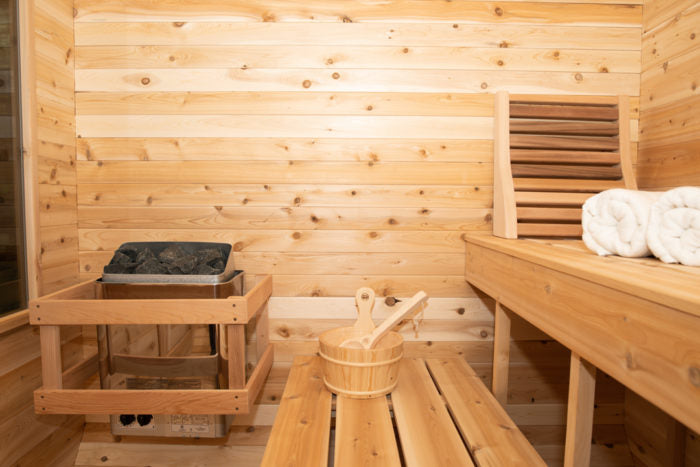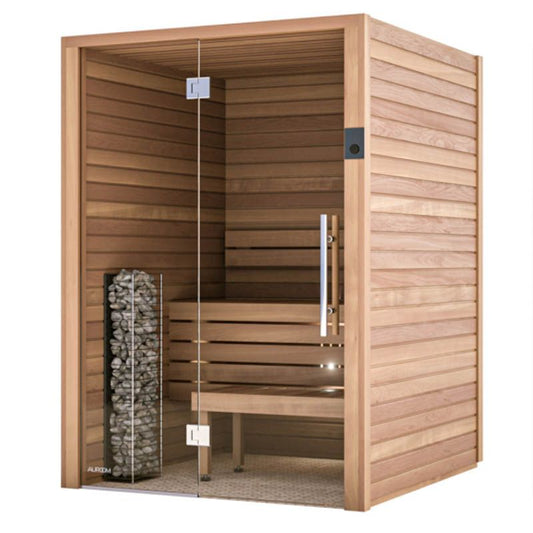Some Known Details About Traditional Sauna
Some Known Details About Traditional Sauna
Table of ContentsTraditional Sauna Fundamentals Explained10 Simple Techniques For Traditional SaunaSome Known Questions About Traditional Sauna.Unknown Facts About Traditional SaunaTraditional Sauna - Questions
Most of the weight shed in a sauna is water loss and is re-gained upon rehydrating. Without a question sauna can be an essential part of a healthy and balanced weight loss program. To take a look at the differences between typical and IR saunas, I will separate these right into verifiable, theoretical, and made differences.Hence, the most popular point in the saunawhich goes to the ceiling directly over the sauna heateris generally in between 185 and 190 F. Claims that a traditional sauna exceeds 200 F is just not true and not relevant for electrical saunas marketed in the US. The temperature for a far-infrared sauna is generally set in between 120 and 140 F; however, unlike the traditional sauna, the objective in and IR room is not to attain a high temperature.
As a result of this, the temperature difference is almost unimportant, since excessive sweating results in both sauna types, yet the method of heating up the body is various. In an IR sauna the bather will feel warm and will certainly sweat profusely, however at much lower temperature levels (Traditional Sauna). Hence, if the goal is to invest longer amount of times in the sauna, the IR sauna is a good selection
When a typical sauna has actually been properly heated, the sauna walls are warm, the air temperature has actually achieved established temperature level and the rocks are extremely warmed. As a fascinating side note, the warmed walls and the rocks are producing far-infrared warmth, incorporated with the heated air, to produce an "enveloping heat".
Traditional Sauna Fundamentals Explained

When the high temperature is accomplished, the aspects cycle on and off to preserve the heat. The majority of conventional sauna individuals take pleasure in pouring water over the rocks to produce vapor to raise sauna humidity levels. The benefits of putting water over the rocks consist of: making the room more comfy, dampening the nasal flows, and permitting the use of aromatherapy by mixing vital oils with the water.

When the power enters the body, it creates the body temperature to raise and eventually causes sweating. In an infrared sauna it's crucial for the emitters/heaters to stay on nearly regularly. Because there is no mass of rocks to retain warm, the sauna will certainly cool if the emitters shut down.
As mentioned over, the sauna bather in an infrared space wishes to place himself in front of running emitters to obtain maximum benefit from the warm. The home heating time for both areas can be very different, depending upon just how the rooms are used. For a traditional sauna, a bather must permit 30-40 minutes for the space to achieve a preferred temperature level and to properly pre-heat the rocks.
The smart Trick of Traditional Sauna That Nobody is Talking About
A well created sauna will commonly attain a temperature level of 150-160 F in concerning 30-40 mins. For hotter temperatures, the room might require to heat for go right here a longer period.

Typical saunas have a tendency to be larger (therefore utilize more electricity) than infrared saunas, although typical saunas are definitely readily available in one and 2 person dimensions too. For a two-person typical sauna, 5x6 or 5x7 dimension is most prominent. The top bench can easily seat 2 or three individuals and is also enough time to relax during the sauna session.
4 Easy Facts About Traditional Sauna Explained
The typical expense per kWH of electricity in the U.S. is around $0.11, so a 4.5 kW heating system will cost about $.50 to compete one hour, if the heater runs constantly for one hour. Usually a sauna heater will certainly run for 75% of the first hour and 50% of subsequent hours on because the aspects cycle once the established temperature level is achieved.

There is a hardly ever gone over difference in the social experience in between the 2 areas. While our culture has shed several of the social advantage of the standard sauna experience, it can be extremely socially gratifying (Traditional Sauna). From family time in the sauna, to heart-felt conversations with loved ones, to sauna partiesthe typical sauna experience can result in intimate socializing
Some Ideas on Traditional Sauna You Need To Know
The majority of greater end infrared areas consist of tinted light treatment, sound systems and full-glass fronts.